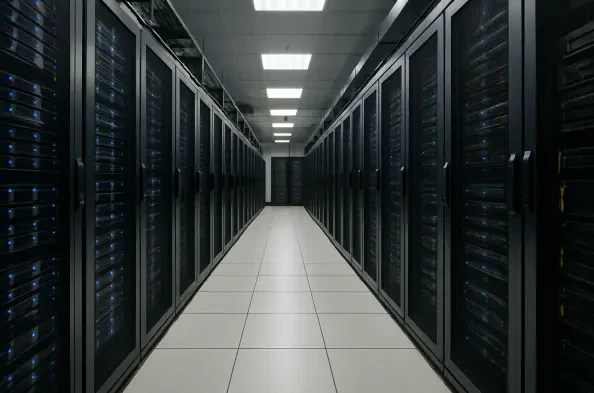South Korea has long been celebrated as a pioneer in digital governance, with its cutting-edge e-government systems setting a global benchmark for efficiency and innovation. However, a catastrophic fire at the National Information Resources Service (NIRS) headquarters in Daejeon has shattered this image, bringing hundreds of vital government services to a grinding halt and exposing deep-rooted vulnerabilities in the nation’s digital infrastructure. The incident has disrupted everything from emergency response systems to online public portals, leaving citizens and businesses stranded in a sea of administrative chaos. The slow pace of recovery has sparked widespread frustration and raised pressing questions about why a tech-savvy nation is struggling to bounce back from such a setback. Delving into the heart of this crisis reveals a complex web of immediate damages, systemic shortcomings, and governmental challenges that have delayed restoration efforts far beyond initial expectations. This exploration aims to uncover the underlying reasons for the prolonged recovery and what it means for South Korea’s digital future.
Unpacking the Daejeon Fire and Its Widespread Impact
The fire that erupted in a server room at the NIRS facility in Daejeon struck at the core of South Korea’s digital backbone, severely impairing a facility responsible for managing over one-third of the nation’s 1,600 government systems. This wasn’t a minor hiccup; the blaze directly damaged 96 core systems while necessitating the shutdown of an additional 551 to prevent further harm from heat exposure, resulting in a staggering total of 647 systems going offline. Critical services such as Government 24, a primary online portal for public interactions, online postal services, and even the 119 emergency call system were rendered inaccessible. The immediate aftermath painted a picture of digital devastation, highlighting just how reliant the country has become on this centralized hub for daily operations. Such widespread disruption has not only inconvenienced citizens but also exposed the fragility of a system that many assumed was impervious to failure, setting the stage for a recovery process fraught with challenges.
As updates trickle in, the sluggish pace of restoration efforts has become a focal point of concern for many stakeholders across South Korea. Of the 647 affected systems, a mere 73 have been brought back online, with just over half of the most critical “Grade 1” systems—those deemed essential due to their high user impact—restored to functionality. For a nation renowned for its technological advancements and rapid problem-solving, this slow progress is both surprising and disheartening. Citizens continue to grapple with significant disruptions in accessing basic administrative services, amplifying public frustration. The scale of this digital paralysis underscores a critical dependency on the NIRS infrastructure and raises urgent questions about the adequacy of contingency plans in place. This situation serves as a stark reminder that even the most advanced systems can falter without robust safeguards, pushing the government to confront the reality of an unexpectedly prolonged recovery timeline.
Government Strategies and the Struggle with Timelines
In the wake of this unprecedented crisis, the South Korean government, spearheaded by the Ministry of Interior and Safety, has devised a recovery plan that hinges on relocating damaged systems to a public-private cloud cluster at the NIRS branch in Daegu. Vice Minister Kim Min-jae has outlined a sobering timeline, projecting at least a month to fully restore the 96 systems directly impacted by the fire—a significant departure from the initial two-week estimate floated shortly after the incident. This extended timeframe accounts for the intricate process of securing new infrastructure and reconstructing complex systems, a task that has proven far more daunting than anticipated. While efforts are underway to accelerate the process through collaboration with the Daegu center, the government has been candid about the absence of guarantees for a quicker resolution. The sheer magnitude of the damage has clearly overwhelmed initial assessments, leaving officials to navigate a recovery path riddled with logistical hurdles.
Meanwhile, the restoration of the 574 systems that escaped direct damage from the fire is progressing, with expectations set for completion within one to two weeks. However, even this shorter timeline feels interminable to those whose daily lives remain disrupted by the outage. Interior Minister Yun Ho-jung has extended a public apology for the administrative turmoil, committing to measures aimed at reducing inconvenience through coordinated efforts with ministries and local governments. Despite these assurances, the reality on the ground suggests that disruptions are likely to persist, casting doubt on the effectiveness of immediate response strategies. This prolonged recovery period has fueled discussions about whether the government misjudged the scope of the crisis from the outset, highlighting a potential gap in crisis management preparedness. As timelines stretch, public patience wears thin, pressing authorities to deliver tangible results amidst mounting scrutiny over their handling of this digital debacle.
Systemic Weaknesses Hindering Swift Restoration
A deeper examination of South Korea’s data management framework reveals systemic vulnerabilities that have significantly contributed to the drawn-out recovery following the Daejeon fire. Information security experts, such as Professor Kim Myuhng-joo from Seoul Women’s University, have pointed to the glaring absence of a “twin server” architecture—a real-time backup system designed to mirror primary infrastructure and enable seamless switching during outages. The lack of such redundancy, particularly for “Grade 1” systems critical to national operations, has led to extended downtime and heightened risks of data loss. Historical warnings, including a major network outage in 2023, were largely ignored, leaving the e-government system ill-equipped to handle disasters of this magnitude. This oversight reflects a broader failure to prioritize disaster recovery mechanisms, turning what could have been a manageable setback into a national crisis that continues to unfold with no quick end in sight.
Compounding these issues are neglected infrastructure initiatives and chronic budget constraints that have left South Korea’s digital defenses exposed. A cloud center in Gongju, South Chungcheong Province, intended to enhance disaster recovery capabilities, has sat idle since its construction was completed in May 2023, delayed by funding shortages spanning over a decade. Billions of won allocated for IT infrastructure upgrades have gone unspent, signaling a troubling lack of prioritization in safeguarding critical systems. Additionally, audits have flagged outdated equipment management practices at NIRS, with failure rates soaring due to delayed replacements. These systemic shortcomings, rooted in years of inadequate investment and planning, have amplified the impact of the fire far beyond its immediate damage. The slow recovery is not merely a consequence of the incident itself but a symptom of deeper structural flaws that must be addressed to prevent future catastrophes from derailing the nation’s digital ecosystem.
Charting a Path Forward After the Crisis
Reflecting on the aftermath of the fire at the NIRS headquarters in Daejeon, it became evident that South Korea’s e-government system had been caught off guard by a disaster that exploited long-standing weaknesses. The extensive disruptions to public services, from emergency calls to online portals, had laid bare the consequences of insufficient redundancy and delayed infrastructure upgrades. The government’s response, though earnest, had been hampered by the sheer scale of damage, with recovery timelines stretching far beyond initial projections. Systemic issues, such as the absence of real-time backup systems and chronic underfunding of critical projects, had turned a single incident into a prolonged national challenge, drawing sharp criticism from experts who had long warned of such risks.
Looking ahead, the path to resilience demands decisive action and a reevaluation of priorities in South Korea’s digital strategy. Investing in active-active redundancy, where backup servers synchronize in real time with primary systems, stands as a critical step to ensure uninterrupted service during future crises. Accelerating the activation of facilities like the Gongju cloud center, alongside consistent funding for IT infrastructure, could fortify the nation’s defenses against similar disruptions. Furthermore, modernizing equipment management practices to prevent failures before they escalate is essential. This crisis, though costly, presents a unique opportunity to overhaul the e-government framework, transforming vulnerabilities into strengths. As restoration efforts press on, the focus needs to shift toward building a digital infrastructure capable of withstanding unforeseen challenges, securing South Korea’s standing as a leader in technological innovation for years to come.






